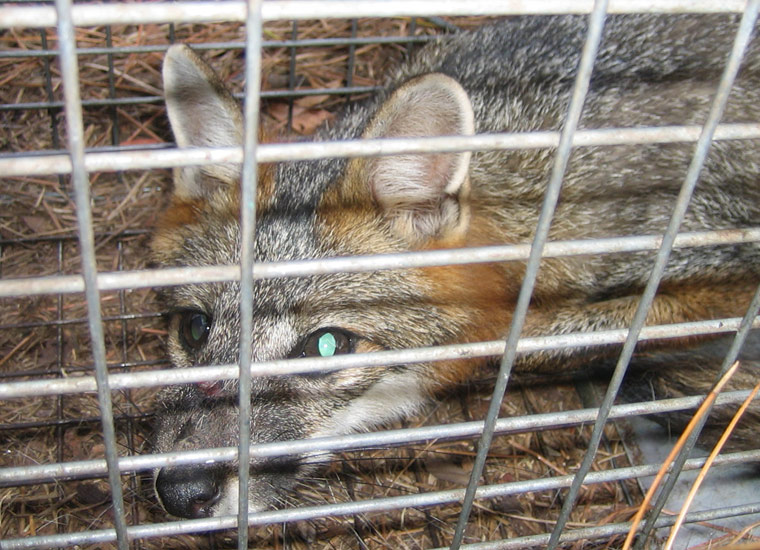- info@wildlife-removal.com
Call us for help in your town
Wildlife Removal Education
Ways to Remove Coyotes from Sheds or Porches
Need coyote removal in your hometown? We service over 500 USA locations! Click here to hire us in your town and check prices - updated for year 2020.
There are a few options open to you when you want to look at getting coyotes out from under a shed or porch. It depends whether or not you would like to take a humane approach or an inhumane approach.

Let’s take a closer look …
The Inhumane Approach
The non-humane approach is one that will potentially put the creature in harm or danger. Poison, for example, is not only non-humane, but also incredibly dangerous. You run the risk of poisoning or killing other animals, and even causing secondary poisoning too. If a rat were to eat poison and then die, and then another animal, such as a coyote, were to then eat that rat, they would have poison in the body as a result of eating the poisoned carcass. This is how cats and other domesticated animals suffer with secondary poisoning and can be fatal in the worst cases.
Also: it is wise to note that there is NO registered poison to kill coyotes.
Another inhumane approach would be to trap and then release the creature. You may think that this *is* a humane method to remove a coyote from under your shed or porch, but the reality is very different. An animal that has been released has been shown not to survive for very long, especially if it is very far away from the area in which it was trapped. If you release the creature in the same territory, it’ll just come back and be a problem again. You will also have caused that animal a really inhumane amount of stress for what will essentially be no reason.
Animals get incredibly stressed when they are confined to a small, metal cage. To add to that, they will experience stress when they are released into a brand new area. They will need to find the things they need in order to survive, and they probably won't have a lot of time to do it. If the creature is nocturnal and you release it during the day, it will be too tired to find a place to sleep. By the time the nighttime comes, it will be so exhausted and without a place to call shelter. It is vulnerable, hungry, probably cold (depending on the climate), and also at an increased risk of coming under attack from predatory animals. A coyote that has been released in the same area as timber wolves, for example, will likely come off worse.
As well as not being able to find shelter, the newly relocated coyote will also have no idea where to find food, warmth, or water, and it will also be lonely. In the case of rats in a laboratory, the physical pain of sorrow can be experienced when ripped away from their family members and friends. We don't know whether or not this is the case for coyotes, but we do know that they become very stressed when released on their own.
Your trapped and released coyote will more than likely die.
Even certain repellents can be seen as inhumane. Moth balls and ammonia-soaked rags, for example, have all been suggested on the internet as a way to get rid of various wild critters, specifically coyotes. These are both incredibly dangerous, to ALL living organisms that come into contact with them, and not just the coyote you are intending to repel. They also have been shown to have very little/no effect, which means you are just putting dangerous chemicals down for seemingly no reason.
The Humane Approach
One of the best and most humane approaches that you can take is to just wait it out. Most coyotes will only stay in one den for a short space of time, but they do have a habit of returning to the same dens every once in a while if they have the option. Taking this into consideration, you may find that it would actually be faster to wait for these creatures to leave of their own accord, rather than forcing them out, or trapping and releasing.
Once they have gone, you are then free to clear up after them, and seal the space up to ensure they don’t/can’t come back. It would be foolish to ignore this step.
If you don’t like the idea of leaving the coyotes until they want to leave, you could look at using non-toxic repellents, such as sprinkler systems, noise devices, or light machines. Coyotes are very shy creatures, usually choosing to avoid human interaction as much as possible. They won’t appreciate being lit up with the beam of sensor light in the back garden. They won't much like being squirted with the cool jet from a sprinkler system either, which you could also get on a motion sensor or on a timer if you’re aware of the animal’s patterns.
Repellents are shown to be more ineffective than they are effective, although eviction fluid that contains the urine of wolves has been shown to have some success in encouraging these creatures to move out of the space under your shed or porch.
With larger and more dangerous animals, such as coyotes, it is often best left to the professionals to get rid of them, if you can't wait for the critters to leave. With many rules and laws to take into account, as well as problems faced by every approach you take, you may find yourself with of don’t-work methods before you finally find something that works for you.
Go back to the Coyote Removal page, or learn tips to do it yourself with my How to Get Rid of Coyotes guide.


















